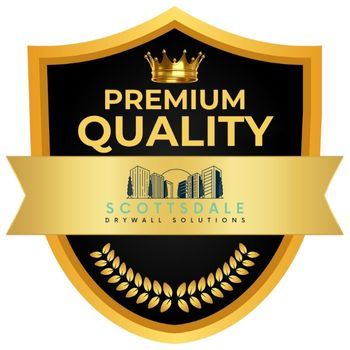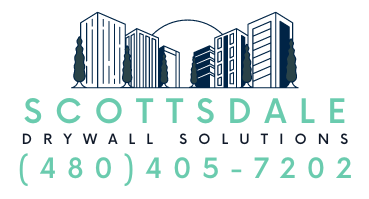Youngtown Drywall Repair Services
Cost-Effective Drywall Repair Contractors in Youngtown, Arizona

When your walls show signs of damage, Youngtown's professional drywall contractors from Scottsdale Drywall Solutions stand ready to restore them to pristine condition. From small patch jobs to extensive water damage repairs, local experts tackle a wide range of drywall issues that homeowners face. As a historic retirement community established in 1954 as America's first planned community exclusively for retirees, Youngtown's 7,056 residents (as of 2020 census) rely on skilled contractors who understand the unique needs of aging homes in Arizona's desert climate.
Licensed drywall repair specialists in Youngtown, AZ offer comprehensive services including water damage restoration, mold remediation, crack repairs, popcorn ceiling fixes, seam repairs, and solutions for nail pops - all while ensuring proper finishing and texture matching for seamless results. With numerous qualified contractors serving the 85363 area, you can find experienced professionals to handle both repairs and new installations. Located just 18 miles northwest of downtown Phoenix in Maricopa County, Youngtown's compact 1.5 square mile area makes it easy for contractors to provide prompt service to all residents.
Your home deserves expert craftsmanship, and Youngtown's drywall contractors deliver quality results through proper techniques and attention to detail. Professional contractors understand the importance of not just fixing the visible damage, but also addressing underlying issues to prevent future problems.

Scottsdale Drywall Solutions (CP)

Comprehensive Drywall Repair Services in Youngtown, Arizona
Professional drywall repair services in Youngtown address all types of wall and ceiling damage, from minor cosmetic issues to major structural problems. Licensed contractors bring specialized expertise to restore your walls to pristine condition. Given Youngtown's position along the east bank of the Agua Fria River and its desert climate with summer temperatures reaching up to 122°F, local contractors are particularly experienced in addressing moisture-related issues and thermal expansion problems common to the region.
Water Damage Restoration
Water damage requires immediate attention to prevent structural issues and mold growth. Your walls need thorough inspection to determine the extent of moisture penetration and potential hidden damage. In Youngtown's arid climate, where average annual precipitation is only 8.34 inches, water damage often results from plumbing leaks, monsoon storms during July-August (averaging 0.84-0.97 inches monthly), or HVAC condensation issues rather than natural flooding.
Professional contractors use moisture meters to identify affected areas and remove compromised drywall sections. The space behind the walls must be completely dried using industrial dehumidifiers and fans.
New moisture-resistant drywall panels are installed to replace damaged sections. Proper sealing and waterproofing help prevent future water intrusion.
Mold Remediation and Prevention
Mold inspection starts with identifying the moisture source and extent of contamination. Certified technicians use specialized equipment to detect hidden mold behind walls. While Youngtown's desert environment naturally inhibits mold growth due to low humidity, the town's aging housing stock from the 1950s-1960s can develop mold issues in areas with poor ventilation or water intrusion, particularly given that many original homes were built before modern moisture control standards.
Affected drywall sections are safely removed following EPA guidelines to prevent spore spread. The exposed area undergoes thorough cleaning and treatment with antimicrobial solutions.
New mold-resistant drywall installation includes proper ventilation improvements and moisture barriers. Regular inspections help catch early signs of recurring moisture issues.
Patch and Crack Repair
Small holes from door handles or picture hangs need proper patching with joint compound and reinforcement mesh. Larger holes require new drywall pieces cut to size and secured to wall studs. Youngtown's extreme temperature variations, with daily maximums ranging from 65.4°F in January to 104.9°F in July, can cause significant thermal expansion and contraction in drywall systems, making crack repairs a common need for homeowners.
Settling cracks and nail pops are repaired by removing loose material and applying joint compound in layers. Each layer must dry completely before sanding smooth.
Professional texture matching ensures repairs blend seamlessly with surrounding wall surfaces. Proper priming and painting complete the restoration process.
Popcorn Ceiling and Texture Matching
Popcorn ceiling removal starts with testing for asbestos in older homes. The surface is sprayed with water to soften the texture for scraping. Given that Youngtown was established in 1954 and experienced major development through the 1960s, many homes contain original popcorn ceilings that may contain asbestos, requiring specialized abatement procedures by certified professionals.
Professional contractors protect floors and walls during removal. The exposed ceiling surface is repaired and prepped for new finishing.
Your ceiling can be refinished smooth or with modern textures. Custom texture matching tools help blend repairs with existing surfaces. Professional spraying equipment ensures even application of new textures.
Professional Drywall Installation Solutions
Expert drywall installation services in Youngtown deliver precise results for both new construction and renovation projects. Local contractors bring decades of experience in crafting smooth, durable wall surfaces that meet building codes and aesthetic standards. Serving the broader Phoenix metropolitan area, Youngtown contractors are familiar with both residential needs in this historic retirement community and commercial requirements in neighboring Sun City, El Mirage, and Glendale.
Residential and Commercial Drywall Installation
Professional installers handle projects of all sizes, from single rooms to entire buildings. You'll find teams equipped with specialized tools to hang sheets efficiently and safely.
Materials are carefully selected based on your specific needs - moisture-resistant boards for bathrooms, fire-rated panels for commercial spaces, or standard drywall for living areas. In Youngtown's desert climate, contractors often recommend moisture-resistant drywall even in standard applications due to the extreme temperature fluctuations and occasional monsoon humidity that can stress standard materials.
Proper installation includes precise measuring, cutting, and securing sheets with the correct screw patterns. Joints receive professional taping and compound application for seamless results.
Remodeling Projects and Drywall Upgrades
Your remodeling project might require removing old drywall, adding new walls, or modifying existing layouts. Skilled technicians can integrate new drywall seamlessly with existing surfaces. As Youngtown continues to modernize its housing stock originally built in the 1950s, many residents are updating their homes with open floor plans, requiring careful drywall modifications to maintain structural integrity while achieving contemporary designs.
Consider upgrading to soundproof drywall for home theaters or impact-resistant panels for high-traffic areas. Modern materials offer enhanced durability and performance.
Installation teams coordinate with other trades to accommodate electrical, plumbing, and HVAC requirements. They ensure proper backing for heavy fixtures and clean cutouts for outlets and switches.
Each project receives appropriate primers and surface preparation for your chosen finish, whether smooth, textured, or specialty coatings.
Expert Drywall Finishing and Seamless Results
Professional drywall finishing requires precision techniques and attention to detail to create flawless walls that look pristine when painted. Expert finishers use specialized tools and proven methods to ensure joints, repairs, and surfaces meet the highest quality standards. With Youngtown's bright desert sunlight and low humidity (creating ideal drying conditions year-round except during brief monsoon periods), contractors can achieve superior finishes with shorter drying times between coats compared to more humid climates.
Tape and Seam Repair
A proper tape and seam repair starts with cleaning the joint area and removing any loose material. Apply self-adhesive mesh tape or paper tape along the seam, pressing firmly to eliminate air bubbles.
Layer joint compound in three thin coats, feathering each coat progressively wider to blend with surrounding wall surfaces. Allow 24 hours of drying time between coats. In Youngtown's arid environment, drying times may be reduced during fall through spring months when average humidity is lowest, but contractors must account for slower curing during summer monsoon season (July-September) when atmospheric moisture increases.
Sand between coats using 150-grit sandpaper, progressing to 220-grit for the final coat to achieve an ultra-smooth finish.
Nail Pop Correction
Drive protruding nails slightly below the surface using a nail set. Place a new drywall screw about 2 inches above or below the nail pop to secure the drywall to the stud.
Apply joint compound over the repair area in thin layers. Each layer should extend 2-3 inches beyond the previous one for proper blending.
Let each coat dry completely before sanding. The final coat should be nearly invisible when viewed at an angle under bright light.
Surface Preparation and Final Touches
Clean all repaired areas with a damp cloth to remove dust. Inspect surfaces under bright lighting to spot any remaining imperfections. Youngtown's intense desert sunlight makes quality control easier, as even minor imperfections become visible under the area's abundant natural light throughout most of the year.
Apply a primer specifically designed for drywall to seal the repairs and provide an even surface for paint adhesion.
Match existing wall textures using appropriate techniques - smooth finish, orange peel, or knockdown. Use a sample area to test texture consistency before applying to the entire repair zone.
Sand any raised edges or texture inconsistencies after drying for a perfectly seamless transition between old and new surfaces.
